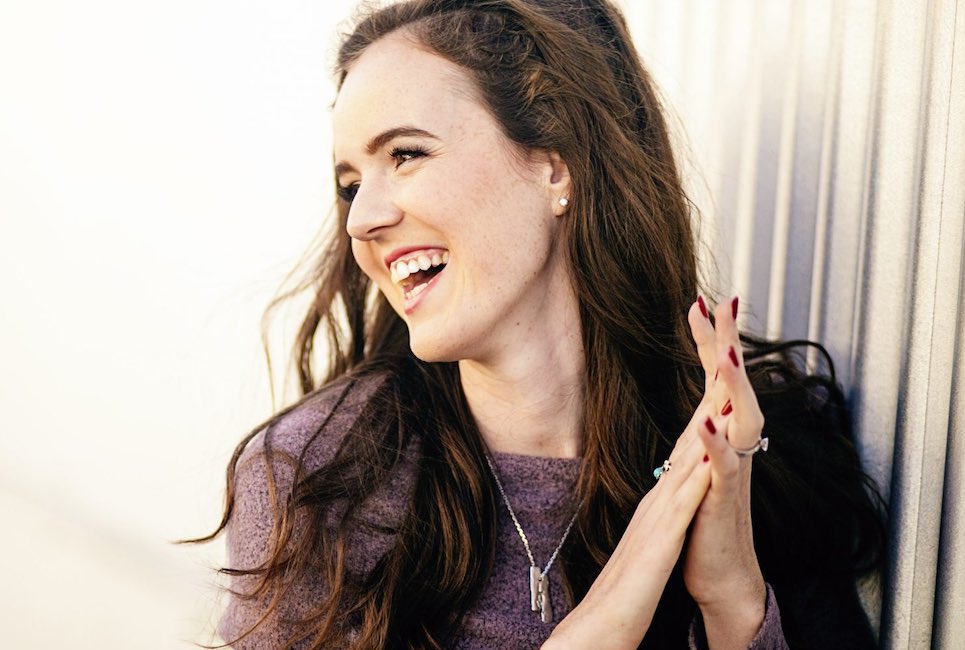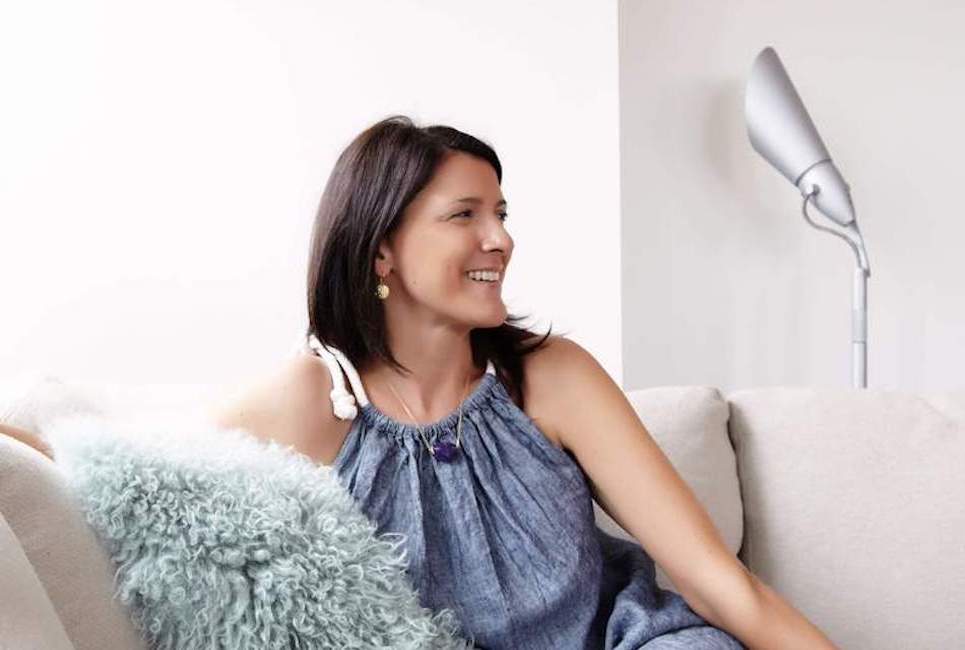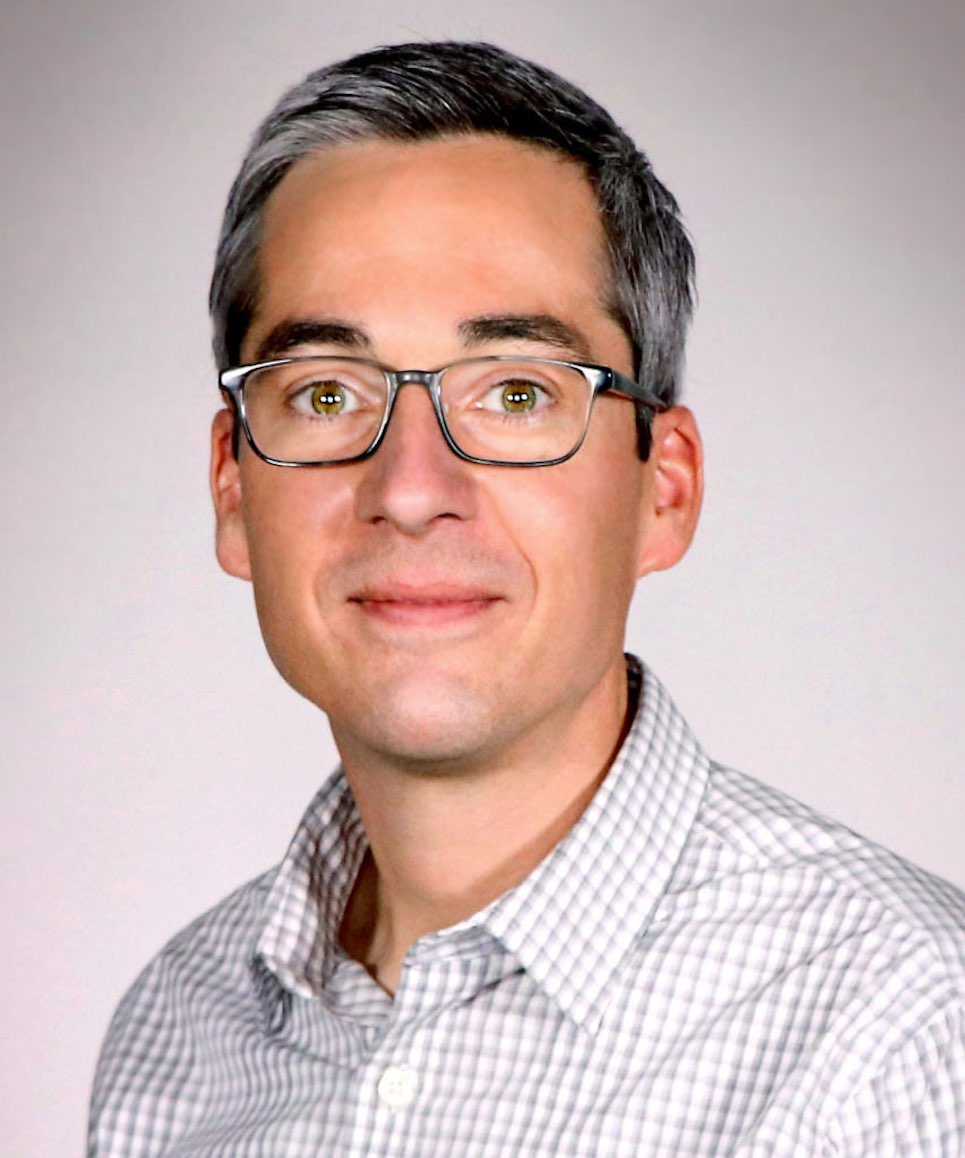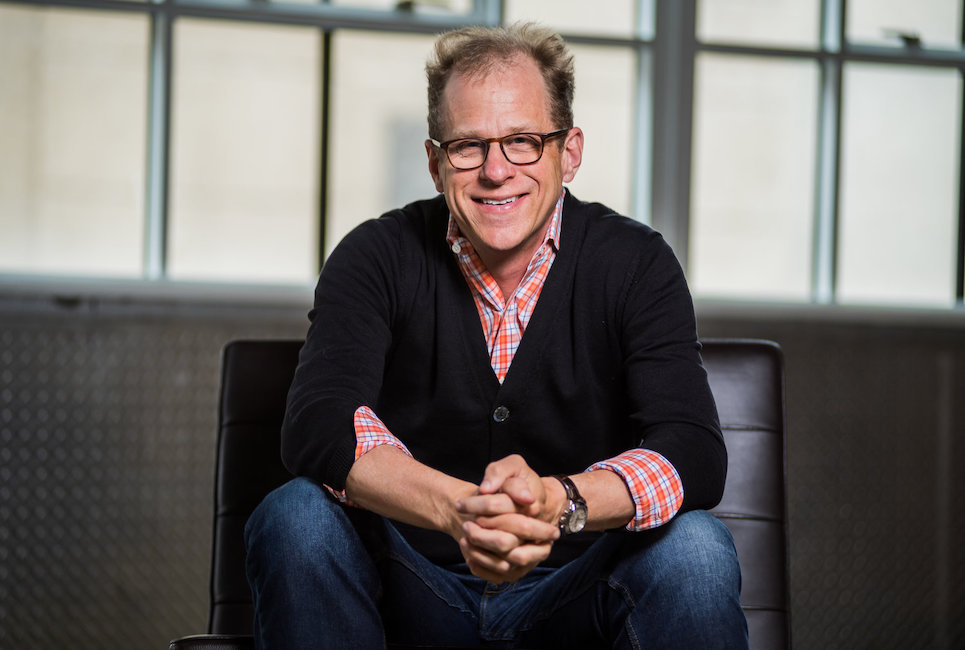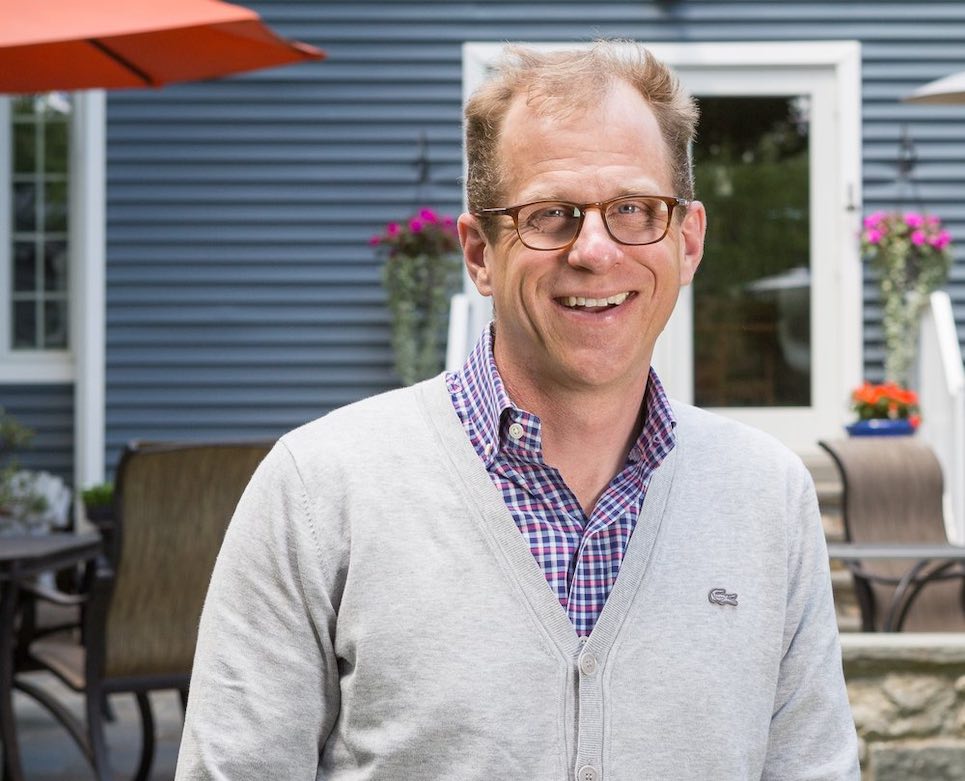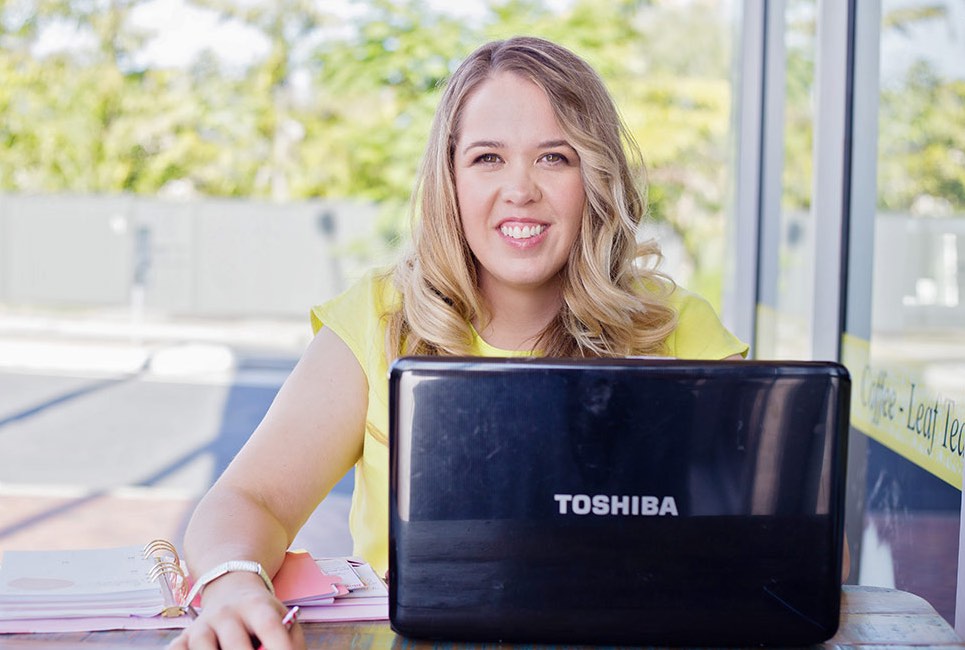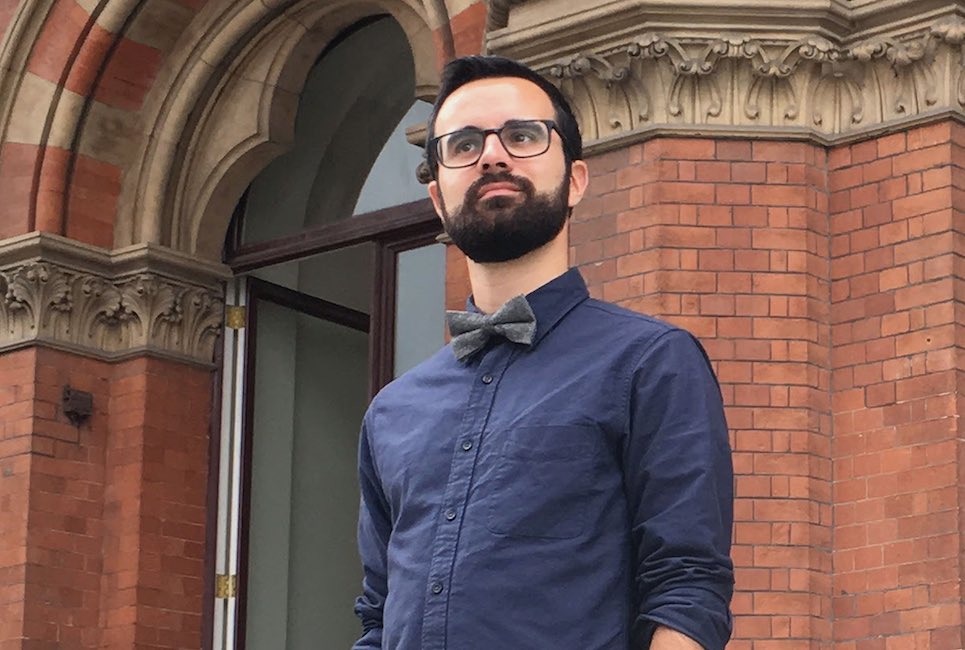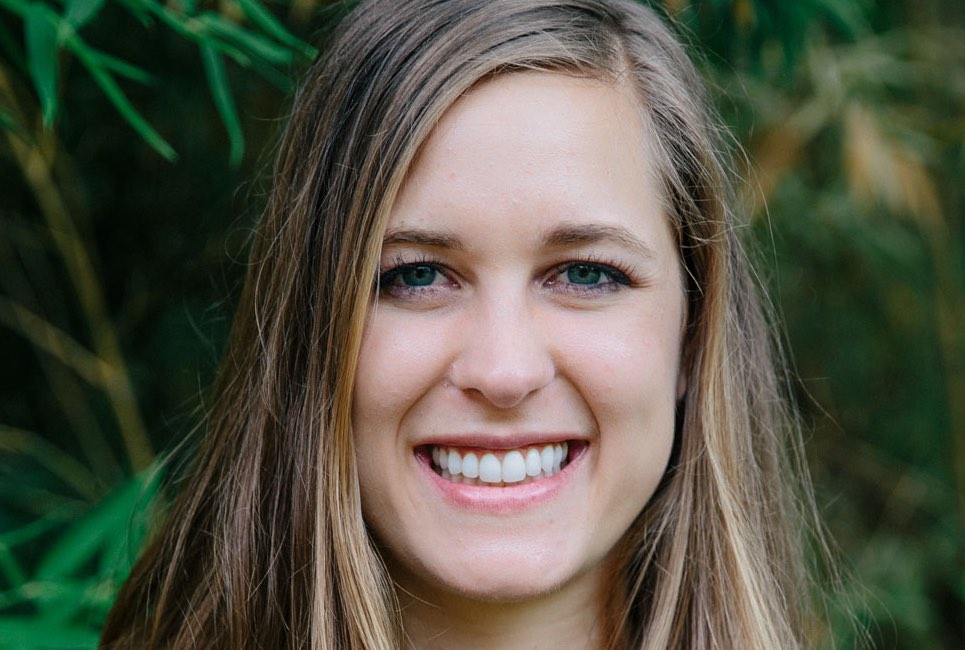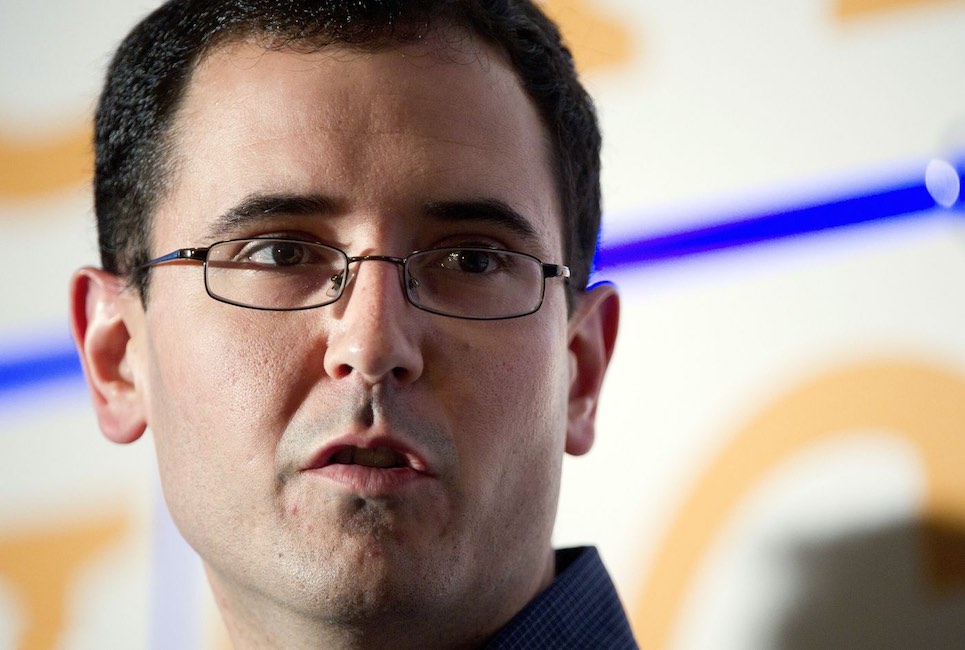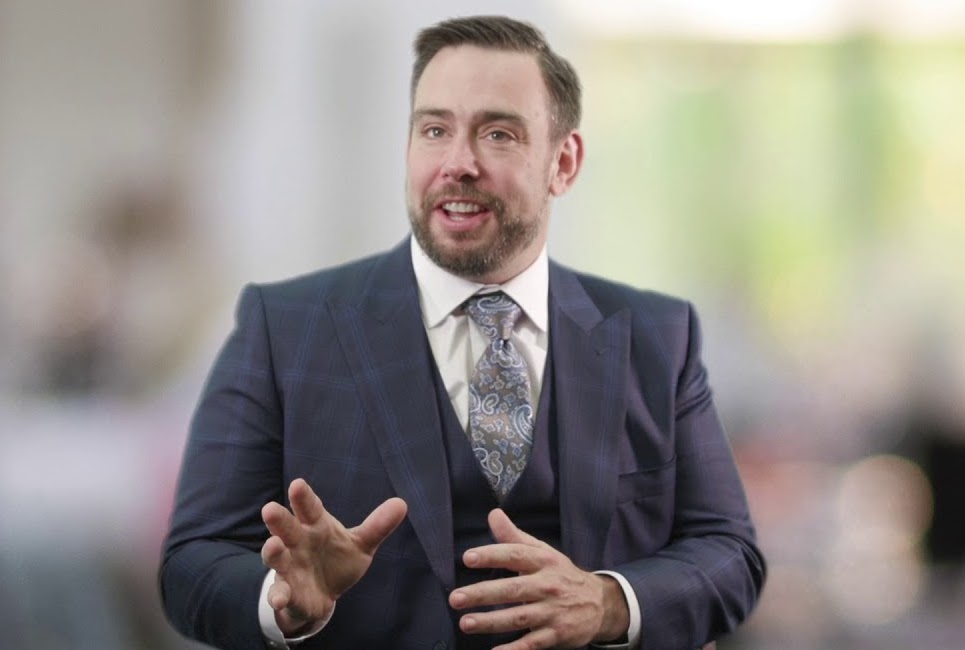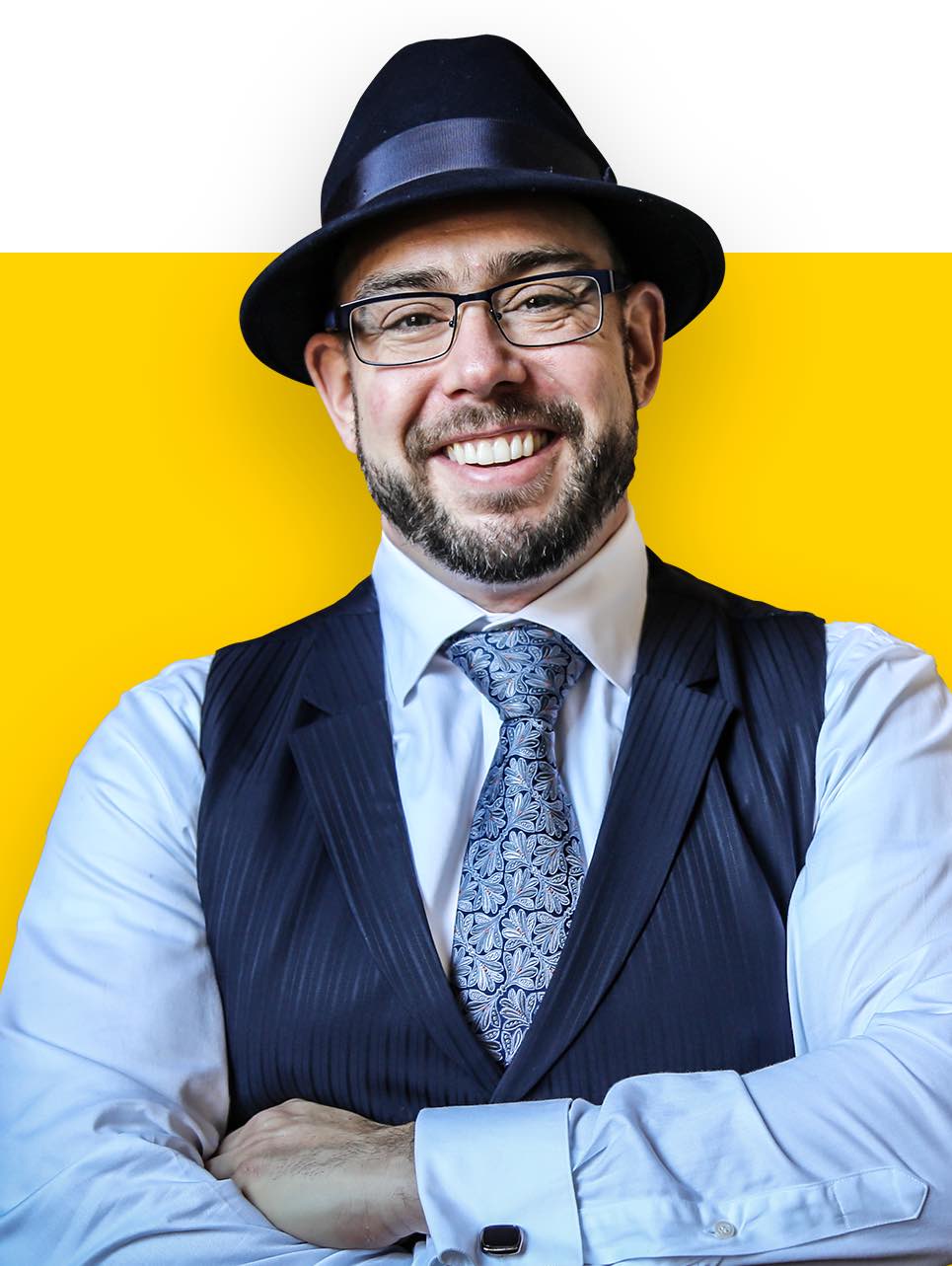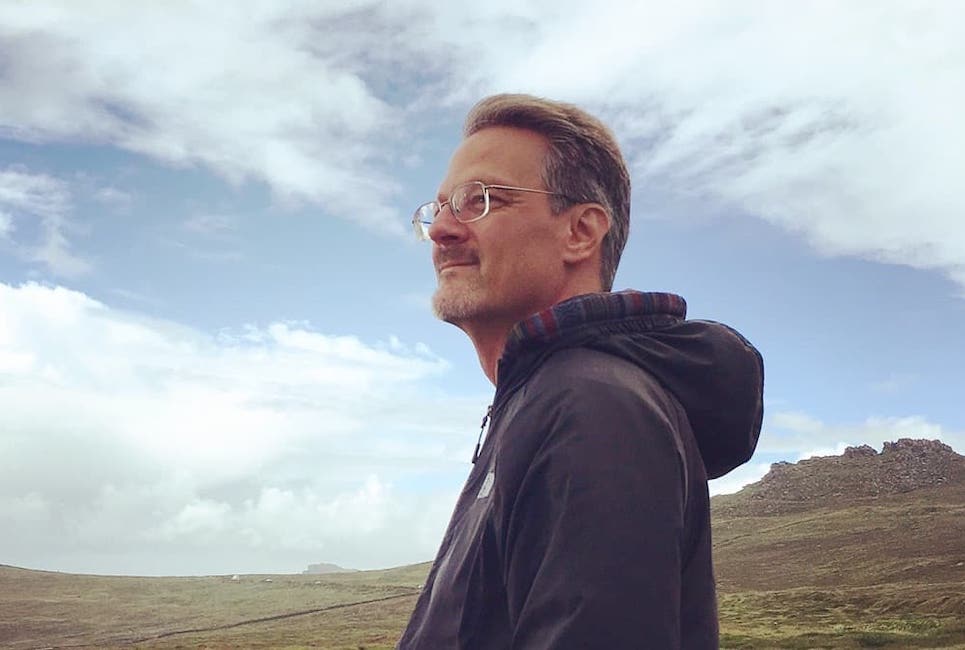Listen to our exclusive interview with Emily Hirsh:
Subscribe to this show on Spotify | iTunes | Stitcher | Soundcloud
Emily Hirsh is a self-taught marketing guru. Her marketing agency, Hirsh Marketing, specializes in Facebook and Instagram ads. Like many entrepreneurs, her business started out as a one-woman show. But in just two and a half years, she has grown her company to 25 employees serving over 60 clients. She is what we like to call a Facebook Ads ROCKSTAR! In this exclusive Emily Hirsh interview, we share some of her best insider secrets (even if you’re not ready to hire an agency yet) so you can get more Facebook fans, traffic, and buyers!
Emily’s typical client has an online presence and is looking to implement a holistic approach to their marketing to improve visibility and brand awareness and generate leads and, ultimately, sales — something most new social entrepreneurs can definitely get behind.
And with a client retention rate of over 90 percent, she is clearly doing a few things right.
Not Ready to Bring on an Agency? Some Powerful Facebook Marketing Tips
You might be at a point in your entrepreneurial journey where you’re not quite ready to invest in the services of a marketing agency but you’d like to test some paid ads. If that’s where you find yourself, Emily warns that many people will get ahead of themselves and use paid ads before they have a really solid foundation.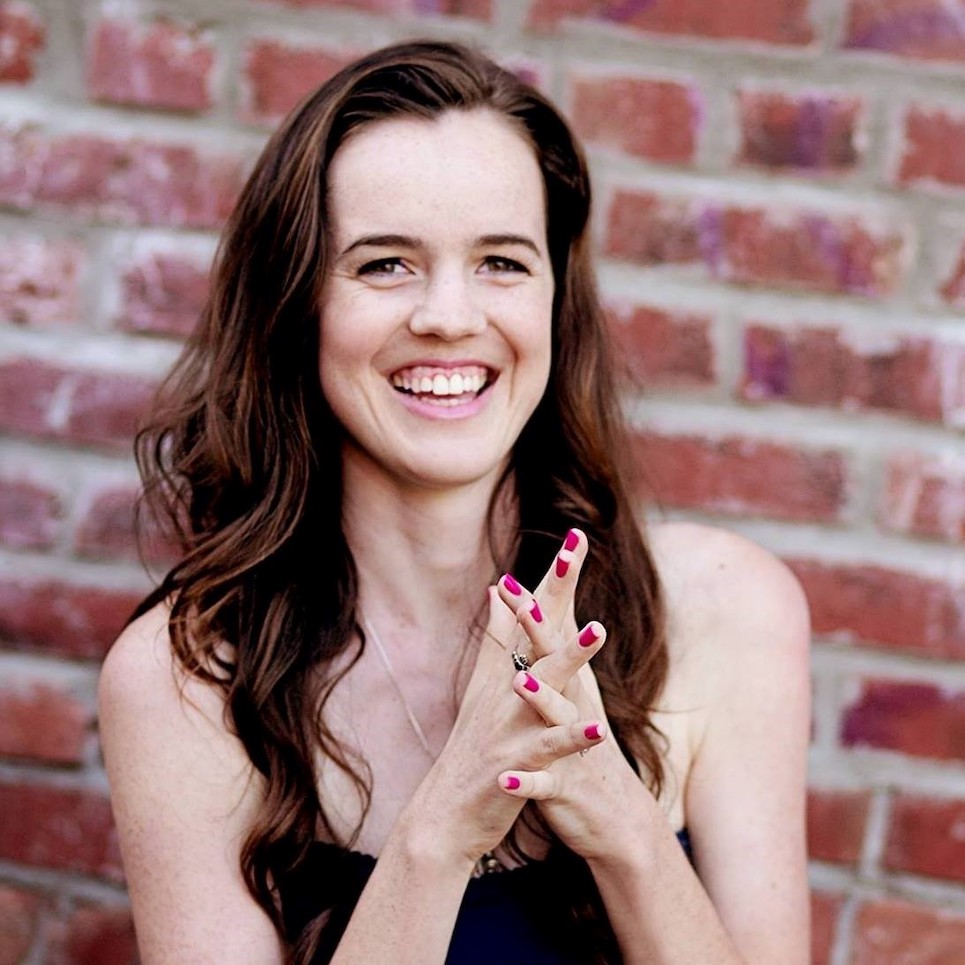
She also emphasizes the importance of knowing exactly who your ad audience is. Ask yourself who that person is so that you can target them on Facebook. Then make sure you have a strategy that you’re confident enough to test since merely boosting posts won’t cut it — it’s critically important to have a way in which you can measure whether your efforts are successful or not. Then spend a bit of cash to get some intel on how effective your ads were.
“Marketing always works,” confides Emily, “if you are willing to:
- go through that process of creating a strategy,
- create metrics that would measure that strategy success,
- spend money testing it,
- get intel to figure out what’s wrong with it, and
- just repeat the process until it works.
Another option, if you don’t feel you’re ready to work one-on-one with a marketing agency, is to consider taking a course like the one Hirsh Marketing has developed. As a product of Emily’s realization that nothing like it existed, the course serves those people who are wanting to learn how to do it themselves and aren’t necessarily ready to hire an agency. Her team teaches part of the course which also boasts a live support component.
The Importance of Buying Data
No one likes to feel like they’re not getting anything in return for the money they’ve spent, especially when they’re just starting out in the business world. However, Emily stresses that it is common for entrepreneurs to spend money on marketing that just doesn’t work. Sometimes, your messaging just doesn’t resonate with your audience. This shouldn’t be seen as failing. Rather, Emily refers to this scenario as “buying data.” You have effectively spent money and in return, learned what doesn’t work.
This is why it’s important to choose a marketing budget that you hand handle not recouping right away. Eventually, you will — as long as you’re sticking to Emily’s recommendations for effective marketing listed above.
Business Will Decline…and That’s Okay
Emily reports that the biggest lesson she has learned in her entrepreneurial voyage is that it’s okay — and often necessary — for your business to go through a phase where growth slows or even stops altogether.
Sometimes you have to…go through a phase in your business where you can’t take on as many new clients and you’re not in that acceleration or growth phase.
Emily advises that this downturn is a good time to look back and repair what “broke” as you grew your business. She admits that there is definitely a learning curve when it comes to this process and that she uses it to build out her employee training and expectations so that they are set up for success when they first come on board.
Looking for More Information?
If you’re new to the world of entrepreneurship and need more information to get started on some effective marketing strategies, hirshmarketing.com is a good place to start. Emily also has a podcast she releases twice weekly as well as a monthly Hirsh Marketing Report with lots of behind-the-scenes strategies and information from her team. Lastly, Emily’s book, Ignite Your Impact, which goes hand-in-hand with her course, is a great resource.
We also recommend:
- The Brand Whisperer: Social Impact Branding
- The Best Email Marketing Tools: How to Find the Right One For Your Business
- How Can You Leverage Your Data Now for Better Growth and Impact?
Transcription of Interview (Transcribed by Otter.ca; there may be errors.)
Announcer 0:00
Welcome. This is the Change Creator Podcast.
Adam Force 0:11
Hey, what’s going on, everybody? Welcome back to the Change Creator Podcast show. This is your host, Adam Force. Hope you all had a good weekend. It is Monday here as we do this. And if you missed the last episode, it was with Maddy Martin. And so great conversation. We talked about, you know, really enhancing your marketing strategy. And you know, there’s money left on the table when you’re not using the latest like AI and messenger technology. So we kind of get into all that stuff and some of the pros, the cons and different ways to go about it. But it’s a really great marketing channel to start exploring. And that could become a whole new revenue opportunity for you. So you might want to check that out with Maddy Martin when you get a chance.
Today we’re going to be talking with Emily Hirsh and she has been blowing up lately. She is a marketing expert. So she’s one of the leaders in digital marketing on Facebook right now. And so, Hirsh Marketing is her company and I’ve kind of been watching her for a while now and we’re doing some work with her, actually. So she has built a team now of 25 plus people — they might be close to about 30 people now. And they have worked on over like, I don’t know, six, seven, I forget how many like hundreds of funnels and stuff for some big players out there — major players, and their ad spend, I believe is over about 25 million, and they had a return on that spend of like 90 million plus. So they really know what they’re doing and they’ve had lots of great success hence they have been scaling pretty quickly.
So we’re excited to talk with Emily. We’re going to dig into the Facebook world and how they’re doing what they’re doing. She is going to share some tips that will help you guys out no matter where you are as early stage entrepreneurs. Last but not least, guys, we just…stop by changecreator.com; we have a lot of fresh content. If you’re into the Shopify…if you have a Shopify store, or if you’re using Magento, we recently put up a lot of content around those things to help you guys out because we’ve been hearing a need for it. And there is a program called Shogun that we…one of our writers did a deep dive on and we got access to their back end to explore the software and stuff. And it’s a Shopify page builder, that is super powerful. It also provides analytics that Shopify does not offer. So when you can start customizing your Shopify product pages and all that stuff, you can really enhance the conversions and things like that. So if you go…it’s spelled S-H-O-G-U-N, Shogun.
So when you go on our website, you could search for Shogun. We have a ton of articles that we talk about to give you guys insights on how that all works. See if it’s the right fit for you. You could start with the Shogun review, and we compare it to a bunch of other softwares and stuff like that. So really valuable stuff and for the e commerce space, so you can check that out. And we’re going to dive into this conversation now. So, one last thing I almost forgot. If you go to changecreator.com, we have…it’s not available on the site but you can get it…I’m going to tell you just through this podcast, there is the…if you want to start…we’re really into storytelling and we believe that you know, this is your number one marketing asset. And it truly, truly is. This is what makes you memorable. It’s what adds value to your products. It’s what connects with people, builds trust, all these things.
So we are helping people supercharge their marketing with storytelling, and there’s some key things we share in a free offer just to give you that first step, give you some insights and ground you in storytelling for your startup, right. It’s all about marketing and sales. And you can go to changecreator.com/storytellingroadmap, and you can grab your free copy, and check that out. I think you guys will get a lot of value out of it. And yeah, we’d love to hear your feedback about it, too. Don’t forget to stop by the App Store, leave us a review. This goes a long way and we very much appreciate it. Let’s dive into this conversation with Emily and see what she has to say.
Announcer 4:00
Okay, show me the heat!
Adam Force 4:05
Hey, Emily, welcome to the Change Creator Podcast show. How you doing today?
Emily Hirsh 4:09
Doing well. Thanks so much for having me.
Adam Force 4:12
Thanks for being here. Excited to talk to you. You know, I’ve been following your team and you for about six months now and it looks like you guys have been doing some exciting stuff. So why don’t you kick us off just letting us know what’s going on at Emily’s world these days. What’s the latest? What’s the greatest?
Emily Hirsh 4:29
Yeah, so I run a marketing agency that specializes in Facebook and Instagram ads. I’ve had my company for really about two and a half years of growing a team and growing an agency but four years in the online industry and helping people with marketing. Like most entrepreneurs, I started out just me and then have grown a team for the last two and a half, three years and now have 25 employees and we serve over 60 clients in specifically the influencer industry. So a lot of people selling digital products, but also physical products and e commerce. But they usually have an online brand, online presence and are looking to have this holistic approach to their marketing to improve that visibility and that brand awareness. And then also, of course, generate leads and sales. So that’s what my team and I do. And I have a lot of fun with the leadership piece of it. And learning how to manage a team has been…is a huge part of what I do now that I’m kind of out of the day-to-day of my business. So, yeah.
Adam Force 5:29
Awesome. I love that you got yourself out of the day to day; it gives you time to go to talk at conferences and do all that fun stuff. I’m curious though, you know, in the earlier years, obviously, we all start out with ourselves a co founder, our small team, and we have to build things up. What has been some growing pains for you, as you do expand the team? I mean, now you have 25 employees. That means you know, you’re working with a larger number of clients and you want to make sure that your values and your processes stay intact. So how did you start managing that as you grow?
Emily Hirsh 6:03
Yeah, I mean, it’s constantly I’m working on it. Honestly, I would say like, every month we have projects around improving our processes and auditing and looking at what we could do better. And I always, my mentor, Alex Charfen always says like, Your business is always broken. And so that’s something that I’ve had to embrace is like, it will never be perfect, but I always can work to be improving it. So, you know, growing a team I had…the biggest thing I learned when I started growing a team is the importance of process. And actually, the importance of slowing down to document and create really solid training materials and expectations so that you can bring somebody into your company and actually set them up for success. I really didn’t know what I was doing when I started growing a team.
Like, I knew how to hustle and grow a business myself. I’ve, like, always been an entrepreneur. I have that blood in me, but I did not know how to grow a team. I had never done it before; no one had taught me. So there’s been a lot of learning around it. And I’d say the biggest thing I learned is that importance and sometimes you have to, like slow down and actually go through a phase in your business where you maybe can’t take on as many new clients and you’re not in that acceleration and growth phase, but you’re in that like stability and “let’s fix everything that broke as we grew, you know, the last quarter or something like that.” And so that’s been a huge learning curve is like that slow down, build out the training, and also expectations for people so that when they come in, they’re set up for success.
Adam Force 7:25
Yeah, I love that. I mean, it totally makes sense. And we always say on our side, slow down to speed up because, right? So like you’re setting yourself up to move forward. And it sounds like you’ve taken all the right steps. So you said you had a mentor. So you found it to be valuable to have yourself surrounded with some people that are helping you out throughout the process.
Yeah, for sure, especially people who have done what I was trying to do and what I am trying to do, you know, finding people who have built bigger businesses or managed bigger teams or done where I’m going like that’s very helpful because they have perspective that I just don’t have. So I really found myself first mentor when it became time for me to grow a team and I kind of call it like when it became time to create a real business and like have a real foundation and real process and employees and all that. That’s when I really sought out a mentor because I didn’t know what I was doing. And so I definitely needed you know, outside coaching and support and guidance around that. And still today, like that’s what I use that mentorship for.
Yeah, it’s pretty amazing when you get into those types of relationships. You don’t realize how valuable it can be until you actually experience it. Like we work with Caitlin Bacher. I don’t know if you know her, and she’s been super awesome. And we just went to one of her like mastermind summits. And, you know, like you said, it’s people that are doing things that you do, and it’s such a significant difference in the experience and the value you get when you do that, right?
Emily Hirsh 8:50
Yeah, absolutely. I totally agree.
Adam Force 8:52
Yeah, it’s powerful. So let’s talk a little bit about you know, Facebook, I mean, that’s your primary focus, obviously Facebook, and Instagram.
Emily Hirsh 9:01
Yeah.
Adam Force 9:01
What got you into, you know, just becoming an expert in that space?
Emily Hirsh 9:06
Yeah, so my story is kind of random. I started as a virtual assistant actually, like five years ago, when my son was born. I’m young, I became a mom at 20. And so I started my company just out of like, Okay, I need to figure out some work that I can do while I take care of my baby. We didn’t want to put him in daycare and we couldn’t afford a nanny. So that was my motivation. And so I kind of fell into then this like online world and found people, you know, creating these digital businesses and courses and influencers. And so at first I was helping them with their marketing, but actually like the systems in the back end and doing more like tactical work as a virtual assistant. And then I had the opportunity to start doing Facebook ads for them.
And so I really am a lot self taught and then the experience of actually like trying something Oh, that works; that didn’t work and then continuing to improve my skills. And even today, like my team, as I’ve grown, like, it’s our experience that is our superpower because we have this like intel and experience. And in marketing, that’s how you learn with Facebook ads is like you try something and like you see if it works or not. And then you can go more that direction or less that direction. And so that’s how I started. And it was just me. You know, it was just a virtual assistant. So I had these clients who are like, “Just try it, you know, like we don’t know are doing and we can’t afford an agency.” That was really, like, the level they were at.
And so I had this opportunity to go in and like do all the ads myself and I would take courses and podcasts. And what’s cool is some of the podcasts I used to listen to to like learn Facebook ads are our clients now. So it’s like, full circle of these huge influencers that we get to work with. But that’s how I started out and then got to a point where that’s all I was doing. And I was full time I had like, 10 clients that I was managing on my own and then I had to decide, okay, do I want to stop here? Do I want to grow a team? And I decided, you know, I definitely want to grow team and keep growing and that was kind of the start of the agency.
Adam Force 10:55
Yeah, I mean, it’s a big decision, right, when you’re at that pivotal point and you decide to…because you you know, expanding into an agency format is very different. So it sounds like it’s been, it’s been pretty interesting for you, and how are you feeling about it now at this point?
Emily Hirsh 11:09
Yeah, I mean, I love it. I love where I’m at now, not in the day to day because I get to have just a different perspective. You know, we have team meetings with my whole ads team where they talk about, you know, strategies that are working and not working. And when you have 60 clients, and we manage about a million dollars a month in ad spend, it’s really cool, the intel that we get, you know, we have and I get to kind of sit at the top and be like, Oh, that’s cool. And you know, know these strategies, but I’m not necessarily like loading ads and doing that tactical work, which is fine, but you know, you can’t grow a huge company doing that.
So I really enjoy…I…my brain definitely naturally thinks in a marketing sense, and I have a very unique way of looking at a funnel or a customer journey that’s really about like relationship building and value for your audience and customizing it for your audience. And I think that’s one of the reasons my company’s done so well is that like natural ability I have to view marketing in that way. But I love it. And then the team building is a challenge. But at the same time, one of the best things I do, because it’s also the most rewarding to see a team working so well together and coming together to do great things.
Adam Force 12:18
Yeah, that’s awesome. And how do you translate what you are very good at when it comes to testing ads and the process to your team now to stay consistent?
Emily Hirsh 12:31
Yeah, so we have a really extensive training program for anyone new who comes on our team. It’s actually built like in Click Funnels, like a course that they go through. So yeah, we have a…first of all, a very extensive hiring process. They have two interviews and a test and they go through like a lot of steps to even get to be hired. So that’s like the first thing we built that was very important for us. And then we have a training program they go through. It’s like a whole course. It’s like a 30 page workbook. They spend the first couple of weeks, like just doing that training program. And then they go through a shadowing, like test exercise portion. So we have a really huge system, which I think is why I’ve been able to scale. I have almost 10 ads managers now, so, two like full ads teams. And my…the same mentor actually said to me a couple years ago, he said, like, you know, you’re in the business of marketing and serving clients, but you’re also in the business of like, creating really good ads managers. And the faster that you can do that and do that well, like the better your business will do. And that was like a really eye opening moment for me because I realized a lot of my priority actually needs to go into how do I train?
How do I bring people in, teach them my systems, and then spit them out on the end that they can go serve clients? And the faster and more efficient I can do that, the better I can grow my business and serve clients. And so that like became my focus and so we’re constantly updating our training and building it out and like, we’re actually going through a revamp of it right now. So I’d say every three to six months we have to update it and then we obviously have ongoing trainings for our existing ads managers, too. [Unintelligible] monthly, keep them up to date. And also collaboration is super important. Like I said, like these ads managers have so much intel and experience that they don’t even realize. So leadership’s job in my company is to bring them together to be like talk about it and help each other out based on what you’re doing. And so we do that weekly on the team, too. That just brings like strategy ideas.
Adam Force 14:30
Yeah, I love that and I just love the steps they’re taking in that pivotal moment of you need to build quality ads managers, that is an eye opener when you start just kind of shifting that perspective and that says so much for where the business can go, right? So the better they are, the better the business will be, right?
Emily Hirsh 14:49
Yeah, exactly.
Adam Force 14:50
Yeah, that’s pretty cool. So I guess I’m curious you know, we’re on the line and people listening are you know, in their first few years of business, and everybody starts to play with Facebook ads. I mean, at some point, when you’re ready to scale to a certain level of income and revenue, you kind of need to get into the paid ad space. And I’m just curious, you know, not everyone’s ready to bring on an agency team just like when you were VA. I’m curious, what are just some ideas of, you know, I think people get really lost in all the options out there and even just starting with like, you know, making sure like you’re targeting the right person or group of people, how many interests, and ya know, how many tests do I run on different images? How much is…do I run $50? $1,000? Like, all these things, and it just kind of like, paralyzes you.
Emily Hirsh 15:40
It’s super overwhelming, for sure. Yeah. And there’s no…and the problem too, is that there’s no like, here’s the formula and if you do this, it will work. Like it’s going to vary for a lot of businesses and then their audience and then their offer. So if you’re in that place where you’re not ready to bring on an agency, but you know the next step is to test some paid ads, I definitely have some advice, which the first one is that people always jump to that paid ads before they have like a really solid foundation. And so make sure that you’re like very clear on who you’re targeting, and not just, you know, interests like targeting on Facebook, but like, Who is that person? And do you have that idea of that person? So you can speak to them and target them on Facebook? And then do you have at least a strategy that you’re confident enough to go test? Because you don’t want to just start boosting posts, right?
And like, Okay, let me see how this works. Like you actually need to have something that you can measure if it’s successful or not. And then you can spend some money and get intel back, was it successful or not? And one thing I always say is that, you know, marketing always works if you are willing to go through that process of you know, create a strategy, create metrics that would measure that strategy success, spend money testing it and then get that intel to figure out what’s wrong with it and then just kind of repeat that until it’s working. And as far as you know, budget to start with, like and targeting, you know, there is no one…that’s the problem is there is no one size fits all advice that I can give. But I do have some…I mean, if you can get 100 people through your funnel or you can, you know, get at least some metric that’s above that even, you’ll be able to get that data and then make decisions.
And I think you also have to be okay with failing, like, you will spend money and lose it. And that’s okay. And when that happens, you have to just know like, I’m actually on the right track because I now know that that doesn’t work or that that messaging didn’t resonate with my audience that I put this out and that’s, you know, that’s actually like part of the process so don’t see it as you’re failing. See it as I’m just going through that process. And I’m trying, you know, getting to the other side.
Adam Force 17:54
Yeah, and I think that’s important. That was a tough lesson we learned, you know, a few years ago is, you know, when you have a new offer you have to pay for data. So you know, you might put in, you could end up spending several thousand dollars just to keep iterating and getting data and it sounds like you’re saying the same thing.
Emily Hirsh 18:11
Yeah, I call it buying data. Like in the first 30 days of testing and offer like you don’t know, you have to choose a budget that you’re okay if you don’t make the money back right away, basically. And then you go do that, and you see how it works. And then you go fix the holes and you do it again, and then you just keep repeating that until it’s working.
Adam Force 18:28
Yeah, yeah, exactly. You know, just a little feedback, something I did hear you say once. I don’t remember where I heard you say it, but it’s stuck in my brain. It is that more…it’s not a matter of if marketing will work; it’s when.
And I always loved that little tagline and I think it’s such a powerful statement because people, including myself, I’ve done this where you get you get panicked and stressed out and you get anxiety when things aren’t working for you. And just like you said, you have to look at it as you’re buying data, you just learn something. So like when you get into those panic modes, it’s like if people turn everything off, and they then they stop, right?
Emily Hirsh 18:43
Yeah.
Emily Hirsh 19:09
Yeah. Yeah. And and really just viewing it as a process instead of, I’m just throwing this out there and hoping it works like, it is a process. And if you look at marketing as those steps of like, I buy that data, I see how it works. And then I figure out what’s not working, and then I fix it, and I do it again. And you just keep doing it. It is a matter of just when will it work for you not if. It will always work as long as you’re willing to go through that process as many times as it takes to get it there.
Adam Force 19:35
Gotcha. Gotcha. Ya, I know, 100% makes sense. And I’m curious now since day one, do you know have any idea of how many clients and total that you’ve worked with over the years?
Emily Hirsh 19:45
I don’t, but I do have a metric that we’ve run traffic over 900 funnels, we do track that metric. And I think we’re at 18 million total ad spend managed and over 90 million of revenue generated so we track that monthly. But it’s definitely over 100 different clients as we have almost 60 active right now. So, over the years, probably 150 plus clients that we’ve worked with, over the last four years if you count me. But we do track the other metrics of funnels, and then ad spend managing revenue generated every month and a report that I put out.
Adam Force 20:21
Yeah, yeah. Now, tell me a little bit about you got two other exciting things going on as far as Facebook. Why did you create the course?
Emily Hirsh 20:31
Yeah, so I, obviously there’s a lot of people who are not ready to work with us yet one on one as a client with our agency. And so I wanted to for a year to create this course because I feel like we have such amazing resources, from tracking sheets to audience insights to you know, swipe files of copy. And then of course, our strategies. I knew I wanted to create something that really doesn’t exist because we’re in the trenches doing it and teaching it, you know. And there’s people who just teach it, but then they kind of lose sight of it because they’re not doing it anymore. And so I knew we could create something powerful. And I sat on it for a while, because my agency wasn’t in a place where I could put all that time and energy and attention into it, and build it and build the funnel.
And like, you know, focus is very important. So it took me a while to create it. But I wanted to have something out there that could serve those people who are more at that level of, they need to learn how to do it themselves and buy that data, and they’re not ready to hire, you know, necessarily an agency yet. And so that’s why we created the course. It’s very driven by my team and what we do every day for clients. So my team teaches part of it. There’s a live support component of it that my team, you know, goes to weekly calls to answer questions. People come and screen share their ad account to get advice on it. And so it’s just a level of support like down the step from one-on-one clients that I needed…I wanted to build because I felt like we had resources that nobody else had out there to be able to share.
Adam Force 22:03
Interesting. And are you planning on staying focused on the Facebook, Instagram space? Are you planning on trying to break through some other social media platforms?
Emily Hirsh 22:11
Yeah, I definitely want to expand, I just haven’t been able to make the decision to have the bandwidth to do it. But probably Google or YouTube at least in our agency side, I would like to expand to offering that service and building out a department that can do that. So it’s in the plan when we can do it without breaking everything.
Adam Force 22:30
Yeah, I mean, that’s, I guess it’s a pretty big step, considering what you’re doing just with Facebook. It’s like building another company.
Emily Hirsh 22:38
Yeah. I mean, it’s like it would be a whole new department. So it’s also an investment too, because you got to build out for the training and everything. And, you know, I knew how to do Facebook ads, but I’m not a Google and a YouTube ad expert. So it’s a little different experience than how I built this arm of the business because I built all the training and everything you know, so it’s on the radar. It probably will be towards the end of this year or next year, when we do it.
Adam Force 23:02
Interesting. So tell me a little bit about just strategically, again speaking for our audience here who’s kind of playing around with these things and something like your course might be really valuable for them as well. And I’m just curious, you know, if people are testing out ads and things like that, is there anything about Facebook, they should know? Meaning, like you want to give it like, several days before you really call it a test. Like what qualifies it as a statistically relevant test?
Emily Hirsh 23:31
Yeah, I mean, a few like with just an ad itself, usually 24 to 48 hours will give you a lot of data on that ad in terms of like, Is it getting clicks? Is it getting action on the actual ad? But then with a funnel, like if you’re looking at your entire strategy, I usually say at least 100 people need to go through it. So you have a webinar or something, you need 100 leads to really go through and that’s still in the lower end. That’s like minimum. But you know, if you have something that’s 1000 dollars that you sell an average sales conversion is like one to 2% of total people who sign up for your webinar. So unless you get 100 in, you’re not even gonna really know if you got a sale and if it’s converting.
So for your whole strategy, that’s usually what I say. I mean, if you can get 1000, like, that’s way better, but that usually takes a little bit; it depends what you’re running traffic to. But the more people you can get in the whole funnel, in the whole journey is actually like more important than the ads. The ads, you can tell within a couple days. Are they getting clicks, you know, what are those metrics? And what do I need to fix about the ad itself. But the funnel is actually the harder part to get that to convert.
Adam Force 24:36
Gotcha. And I mean, so people…and I like the big picture of looking at the entire funnel. But if you’re trying to figure out ads that are for you know, a lead magnet to the funnel or direct to the webinar or [unintelligible] whatever it is, I mean, is it…do you qualify something in the sense of like, I put $50 on it for two days, and I could just see if it’s being picked up or not, or do you need at least $100. I mean, I know every category and audience is different but I think people get stuck on, Right, I’m going to do a $5 tests and I’m like, I don’t know that that’s going to tell you much.
Emily Hirsh 25:07
No $5 won’t tell you much at all. I mean, I think 50 to 100 you could at least see if you’re on track like that will give you at least a cost per click. Like, is the ads getting clicks? And did it get some conversion to a lead magnet or a webinar? Your goal should be like for a lead magnet we see an average of like one to $5. It depends on the industry. And then webinar we see from like three to $8. So, a lead or a registration. So you can look for that and you know, spending 100 you should at least get some [unintelligible]. So you know if you’re at least on the right track with audiences and your ad copy, and those components.
Adam Force 25:46
Listen, you get us to $3 for a webinar registration, you’re going to be my new best friend.
Emily Hirsh 25:53
Yeah, I mean, it we’ve got some even lower but I don’t you know say it because then people think that’s the standard. It all depends on your industry.
Adam Force 26:01
Yeah, for sure. Yeah. And I think that entrepreneurs…I’ve noticed like some people are like, Oh, yeah, I had someone in our mastermind group. They’re like, Oh, yeah, I’m getting a 40 cent conversion on, you know, a lead magnet. It’s like for a very specific [unintelligible].
Emily Hirsh 26:17
Yeah, or a lot of times, like the health and wellness industry will convert really cheap lead magnets, but that doesn’t compare when you’re targeting business owners. It’s, it’s different. Yeah.
Adam Force 26:27
Exactly. Exactly. I mean, it gets way more expensive. I was super pumped when we were at like, $6 for lead magnet conversion.
Emily Hirsh 26:34
Yeah, no.
Adam Force 26:37
Awesome. Well, yeah, I think one of the…I had another question on the top of my mind. I just lost it. It was about where you were going with things. It might come back to me. We’ll see. So I guess right now you have this book that came out and I was just curious. I want to just hear a couple thoughts on you know, your…I’m actually curious in two things: One, just tell me a little bit about what the books about and why you created it. But two, I’m always curious when people create books in the entrepreneurship space, how long it took and what your process was like?
Emily Hirsh 27:08
Yeah, yeah, you’ll like this. So yeah, I wrote…my book is called Ignite Your Impact. It’s written for the audience that buys the course, that’s really who I wrote it for, because a lot of our higher level clients won’t read, you know, necessarily marketing books. They have it hired out. So we, I mean, some will. But it was written with that in mind, for people for the course. And it’s in depth about our…my process basically, is the core of the book, The Hirsh process, which is five steps. And I’ve always wanted to write a book, but I actually end of last year, joined a program where the goal was to write a book and it was a really cool process. So I actually wrote…the actual writing piece was two and a half days. So I wrote it all like very fast. I went to Hawaii with my friend and we both wrote our book during that time, so super fun. And the way we were able to do that was we pre planned everything.
So that was kind of the key is we had a very clear idea of like, who we were writing for. We had all the chapters planned out and the content that was going to go in them. So then you just sat down and you wrote. And you, you know, got through like three or four chapters a day, and you just had this schedule. And so I was able to get it done pretty quickly from when I decided I was going to do it to being done. And then obviously, it had to go through publishing and creating the cover. We self published so there’s a lot of steps you don’t know about, like, formatting a book and like an ISBN code, which I didn’t know what that was until, like a couple weeks ago. So you know, we added to that, but, you know, I wrote it to get my process out in another way for people to be able to consume it through reading it.
Adam Force 28:43
Yeah, I mean, that’s exciting. I see all your puzzle pieces coming together. So I hope it feels good. I mean, it looks good.
Emily Hirsh 28:51
Yeah, it does feel good. I can’t…I actually haven’t gotten a hardcover of it or a paperback of it like it’s coming. But I can’t wait to actually have that because that will be cool. It’ll be holding, you know, finally, a published book.
Adam Force 29:01
Yeah, it’ll be a feather in your cap. And so congratulations on all the progress and things that you have going on. I think one last question that people might want to hear, especially for the entrepreneurs in our audience who are, you know, six figures, and maybe they do want to hire out Facebook ads. I know I sure as hell don’t like managing Facebook ads. So the question is, you know, maybe just tell people a little bit about the process and like, how do you validate people? And are there companies that sometimes you don’t take on for any reason? Like, how do you know someone will have success with you or not? Because I’m sure you want to make sure anyone you work with that [unintelligible].
Emily Hirsh 29:40
Yeah, we…yeah, I mean, you’ve been through it. Our application and talking to our team, like we do have a pretty extensive process and of just getting people through just the application and then talking to our team about their business. We won’t take anyone on who doesn’t go through that process because like you said, we want to make sure that we can help you. And so people that you know wouldn’t be a fit is one…like the level…like if they…let’s say that they’re at a place where they’re like I can spend $1,000 a month ad spend. I mean, it doesn’t make sense to hire our agency and pay a management fee and then only spend that much like on ad spend because we can’t make you the money back, right?
So that’s one thing we’re looking at. And also, how much have they sold of their offer? Are they clear on who their audience is? Are they clear on the messaging piece, because we help with the strategy and we create great messaging. I mean, I have a creative team, but we have to… they have to have a solid idea of who they’re trying to go after and what they’re trying to sell that person to, before we can come in and do our job. We have a couple different packages. So we have like people who come in and they’ve already sold a ton and they’re at a higher level of business. And then we do have one that’s like for testing and buying data, but still done for you. So we have those options, but really they have to have a very clear offer. They have to be able to spend…the minimum is two to $3,000 a month in ad spend.
And then pay our management fee to make it worth hiring us, basically. So those are the big things that we’re looking for is like, do they have that clarity so we can do our job. We also really look for collaborative people, because our like, team takes over everything, but we’re working with influencers. And so we need you to be willing to do content and willing to show up for your audience and put out that value for our job to be the best that it can be. And so we’re looking for those people who are like, want to have a partnership and want to be collaborative and want to have like a holistic view to their marketing. And so they’re willing to show up on their organic social media, or maybe it’s like podcast or whatever. And we pair that with paid ads, and that’s when it works so well. And so we’re looking for that, too.
Adam Force 31:47
Oh, yeah, that sounds cool. I like that, too. And if you don’t mind me asking, and if you’re not comfortable answering you don’t have to, but I’m curious of…as people go through their, you know, three months or whatever the package might be that they work with you on to get the data and testing, what your retention rate is for clients these days.
Emily Hirsh 32:08
Yeah, so we track that daily. And it’s over 90% is our average every month. It fluctuates. Sometimes it’s 85, one month and 95 and other but at 90% is our average for the whole year of 2019. And we have…I’m like huge on that metric. We actually put it in our daily huddle on our team to track every day.
Adam Force 32:28
That’s awesome. Yeah, that’s a amazing number. I will let you know that when I was at the summit in California, just this last week, I was talking to Ally Ball and some others in Caitlin’s you know, mastermind program, and lots of nice things were said about Hirsh Marketing.
Emily Hirsh 32:45
Oh good. I’m glad. That’s an important piece with your…like any business, you gotta pay attention to your delivery because otherwise it catches up to you and that’s been a huge focus of mine is the actual client delivery and satisfaction and I I think that’s a huge contributing factor to my success for sure.
Adam Force 33:03
Absolutely. I could see the word of mouth doing its job. People were getting excited. Oh, really? Yeah. And you know, I’ve been following her and then they hear referrals, basically. So yeah, I’m just wanting to let you know, because I thought it was pretty powerful.
Emily Hirsh 33:15
That’s awesome. That makes me feel good.
Adam Force 33:18
Good, good. Good. So all right, listen, where I want to be respectful of your time. So we’re going to wrap up here, but I want to give you a chance to just let everyone know where do they find you? How do they learn more and see in what capacity maybe they can work with you?
Emily Hirsh 33:32
Yeah, I mean, honestly, my website is probably the best place to go: hirshmarketing.com because then you can kind of check out our agency services or check out our program or check out my book if you just want to go that route. I also have a podcast I release twice a week that sounds like yours — like short, a lot of value in it so people can consume it. And so I give away a lot of value because my ideal client is somebody who doesn’t want to necessarily do it themselves fully. So I give away a lot on that podcast, like I’m very transparent and strategic. And so yeah, that comes out every…twice a week. So that’s another option. And then we release also what I call the Hirsh Marketing Report every month, which has a lot of behind the scenes strategies and intel and data from my team, from what we’re seeing from what we do. And we release that every month in a PDF.
Adam Force 34:23
There you go, guys, you got a ton of information. I’ve listened to it. I’ve scoped it out. There’s a lot of value in there for sure. Emily, our team is sick of Facebook ads so that’s why we spoke to you guys. And we really appreciate you just taking the time here today to you know, share these ideas, share your story. It’s nice just to see how you’re developing things and the success that you’ve had. So appreciate your time.
Emily Hirsh 34:49
Thanks so much.
Announcer 34:51
That’s all for this episode. Your next step is to join the Change Creator revolution by downloading our interactive digital magazine app for premium content, exclusive interviews, and more ways to stay on top of your game available now on iTunes and Google Play or visit changecreatormag.com. We’ll see you next time where money and meaning intersect right here at the Change Creator Podcast.

